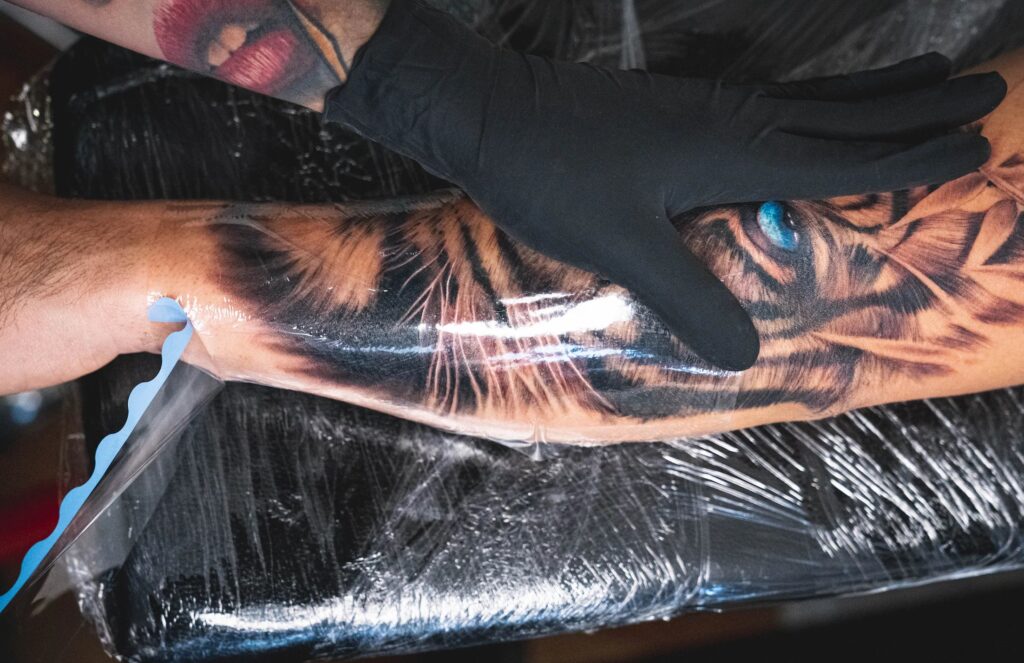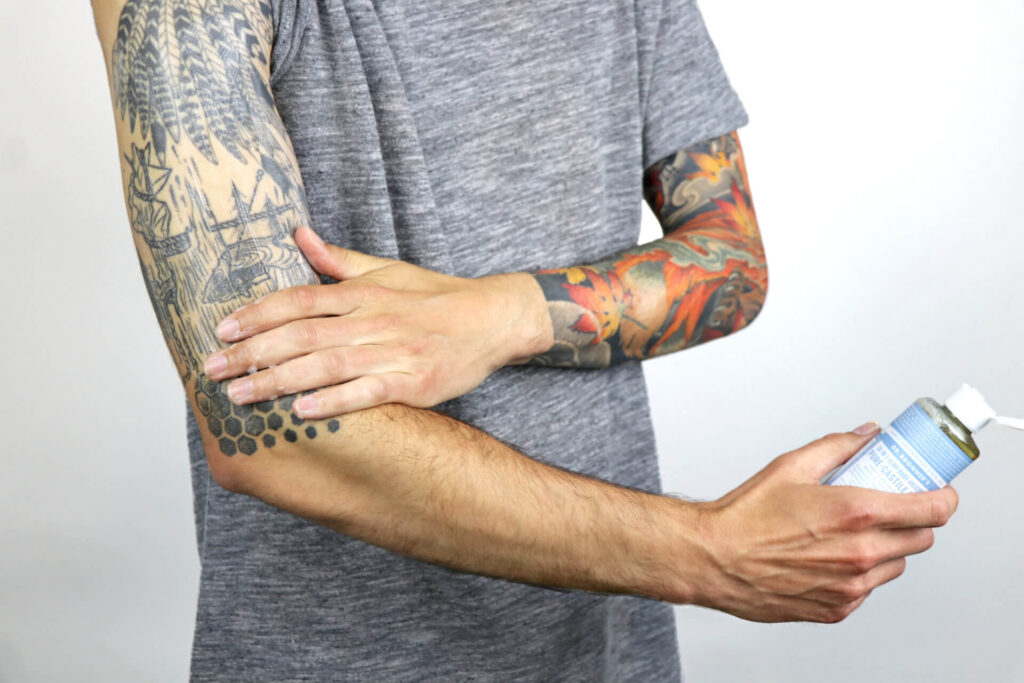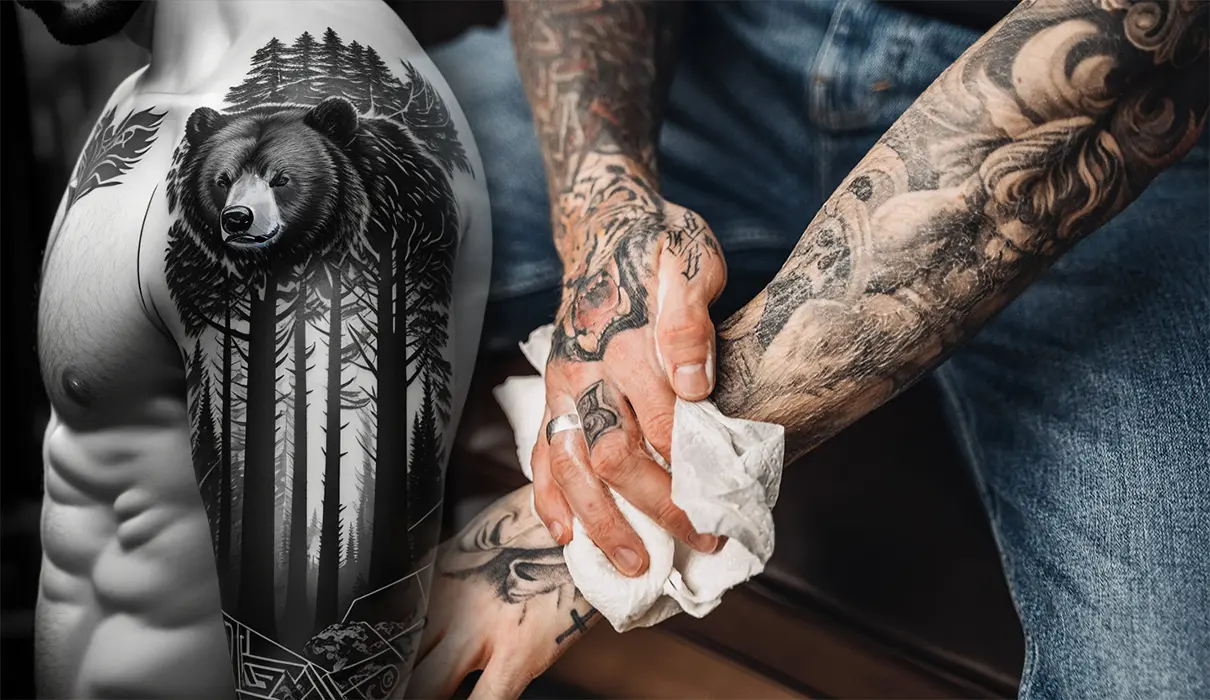Introduction
Getting a new tattoo is an exciting experience, but it’s also a big responsibility. The way you care for your tattoo, especially in the first few weeks, can significantly impact how it looks for years to come. Unfortunately, there’s a lot of conflicting information out there about tattoo aftercare, which can lead to confusion and potentially harm your new ink. This guide aims to clear up that confusion and provide you with reliable, dermatologist-approved advice on how to care for your tattoo.
Preparing for a Tattoo Appointment
Before you even step foot in the tattoo parlor, there are several things you can do to prepare for your appointment. Eating a meal and drinking plenty of water beforehand can help you handle the tattooing process better. Avoid substances like alcohol, aspirin, ibuprofen, and caffeine, as they can interfere with your body’s response to the tattoo.
On the day of your appointment, exfoliate and moisturize your skin, and stay out of the sun. Avoid heavy workouts for a couple of days before your appointment, as they can make your muscles sore and tense, which can interfere with the tattooing process.
Proper Care for a New Tattoo
Once you’ve got your new tattoo, it’s crucial to take good care of it to ensure it heals properly and stays vibrant. The healing process can take up to three months, depending on the size and complexity of your tattoo. Here are some key steps to follow:
Keep the Tattoo Covered
Your tattoo artist will cover your new tattoo with a bandage before you leave the studio. Keep this bandage on for at least three hours. If your artist used a Tegaderm or Saniderm bandage, you could leave it on for up to three to four days.

Wash Your Tattoo
Once you carefully remove the protective bandage, it is crucial to provide proper care to the tattooed area. Begin by delicately cleansing it with a mild, fragrance-free antibacterial soap and lukewarm water. Take your time to cleanse every nook and cranny, ensuring a thorough yet gentle wash. Once cleansed, tenderly pat the area dry using a pristine paper towel, avoiding any vigorous rubbing or scrubbing that may cause discomfort or irritation. Remember, patience and gentle care are key to promoting a healthy healing process for your tattoo.

Moisturize Regularly
Properly nourishing and hydrating your tattoo plays a vital role in ensuring its optimal healing. It is essential to incorporate a consistent moisturizing routine into your aftercare regimen. By diligently applying a high-quality moisturizer to your tattooed skin two to three times a day, you provide it with the essential nutrients and hydration it needs to thrive during the healing process. Remember to choose a moisturizer specifically formulated for tattoos, as these products are designed to promote healing and protect your artwork. Be mindful to steer clear of moisturizers containing petroleum jelly, as they can potentially harm your tattoo and impede the natural healing progression. Embrace the power of regular moisturization to nurture and safeguard your tattoo’s vibrant longevity.
Protect Your Tattoo from the Sun
It’s crucial to shield your tattoo from the damaging effects of direct sunlight, especially in the early stages of the healing process. Sunlight exposure can hasten the brilliant colors in your tattoo’s fading, thereby harming the tattoo’s overall aesthetic. It is essential to protect your tattoo from direct sunlight for the advised two to four weeks in order to maintain its integrity and lifespan. It is highly advised to use a broad-spectrum sunscreen with a high SPF especially created for tattoo protection, whenever you are outdoors for extended periods of time. This guarantees an extra layer of protection from damaging ultraviolet (UV) radiation that can seep through the skin and ruin your tattoo. Keep in mind that careful sun protection not only preserves your tattoo but also enhances its aesthetic impact and long-lasting brilliance.


Avoid Strenuous Activity
Maintaining a balanced and active lifestyle is undoubtedly important, but it is crucial to approach your fitness routine with special consideration for your healing tattoo. Engaging in physical activity too soon after getting inked can expose your tattoo to sweat and bacteria, potentially compromising its healing process. It is advisable to exercise patience and allow a minimum of 48 hours before undertaking any light physical activity. During the first four to six weeks, it is vital to approach your workouts with caution, as your tattoo is still in the delicate healing stage. Be mindful of the movements and exercises you choose, ensuring they do not put excessive strain or pressure on the tattooed area. Prioritize low-impact exercises and be attentive to any signs of discomfort or irritation. By gradually reintroducing physical activity and attentively adapting your workout routine, you promote a healthy healing process while safeguarding the integrity of your precious tattoo. Remember, a balanced approach paves the way for both fitness and the longevity of your inked masterpiece.
Wear Loose Clothing
When it comes to clothing choices during the healing process of your tattoo, it’s important to prioritize comfort and considerate care. The selection of appropriate attire can significantly contribute to a smooth healing experience. To minimize potential discomfort, it is advisable to opt for loose-fitting garments that allow your tattoo to breathe and avoid unnecessary friction. Avoid tight clothing that may rub against your tattoo, as this can lead to irritation and prolong the healing process. Additionally, be mindful of any scabs that may have formed, as snug clothing can inadvertently pull at them, impeding their natural healing progression. By embracing loose and breathable clothing options, you create a gentle and supportive environment for your tattoo to heal with ease. Prioritizing comfort in your clothing choices demonstrates your commitment to the long-term vibrancy and health of your beloved tattoo.


Don’t Pick at Scabs
It’s important to be aware of the common occurrence of scabbing when your tattoo starts its amazing healing journey. Scabs, despite being a typical part of the healing process, need to be handled carefully to get the greatest results for your tattoo. It is crucial to avoid the urge to scratch or pick at the scabs because doing so could potentially lead to harm and ugly scars. Instead, practice patience and let the scabs eventually come off on their own. By allowing your tattoo to cure naturally, you promote a flawless and long-lasting result. Avoid interfering with the healing process. Adopt the discipline of moderation and allow your tattoo heal naturally to preserve its beauty over time.
Avoid Swimming
Ensuring the pristine condition and health of your newly inked tattoo is paramount, and this includes taking precautions when it comes to swimming. Immersion in pools, hot tubs, or natural bodies of water can pose potential risks to your tattoo’s healing process. These aquatic environments may harbor bacteria, putting your tattoo at an increased risk of infection. It is strongly advised to exercise patience and wait until your tattoo has completely healed before indulging in the joys of swimming. By allowing ample time for the healing process to unfold, you grant your tattoo the opportunity to form a protective barrier against potential contaminants found in water sources. This extra precaution ensures that your tattoo remains vibrant, unblemished, and free from any avoidable complications. Embrace the patience required and let your tattoo fully heal before diving into the refreshing waters.

Stay Hydrated
In addition to being crucial for overall health, hydration is also important for the skin’s ability to heal, particularly after getting a tattoo. Making drinking plenty of water a priority can give your body the hydration it needs to help skin healing and reduce the chance of scarring. It’s vital to stick to a regular schedule for drinking plenty of water throughout your tattoo’s healing process. Drinking enough of water encourages good circulation, which helps the tattooed region receive essential nutrients and supports the creation of new, healthy skin cells. Additionally, enough hydration promotes skin suppleness, which contributes to a quicker recovery and lowers the risk of visible scarring. As you set out on your tattoo healing journey, embrace the power of moisture to nourish your skin from the inside out and enable it to bloom with energy and elegance. Keep in mind that drinking water regularly can help to preserve the beauty and vitality of your prized tattoo.

Recognizing and Dealing with Infections
Even if you carefully follow recommended aftercare procedures, it’s vital to understand that infections with tattoos can still happen on rare occasions. For timely and successful treatment, it is essential to recognize the symptoms of a probable infection. Keep a close watch for any odd developments in the tattooed area. An infection may be present if you observe a rash, swelling, or an elevated body temperature coupled with a fever. Increased discomfort, chills, sweating, or the presence of pus or discharge from the tattooed wound are further indications to be aware of. If you notice any of these signs, it is crucial to put your health and wellbeing first by getting help right away. An infection can have risks that can be reduced and a faster recovery can be facilitated with prompt medical intervention. Always remember that being proactive in resolving any issues shows your dedication to the upkeep and preservation of both your tattoo and general health.
Conclusion and Final Recommendations
Tattoo aftercare is a crucial part of the tattooing process. By following these guidelines, you can ensure that your tattoo heals properly and stays vibrant for years to come. Remember, every person’s body reacts differently, so it’s important to listen to your body and seek professional advice if you have any concerns.
Remember, the key to a great tattoo isn’t just a talented artist – it’s also how well you take care of it after you leave the studio.
FAQs
- How long should I keep the bandage on my new tattoo?
Your tattoo artist will cover your new tattoo with a bandage before you leave the studio. Keep this bandage on for at least three hours. If your artist used a Tegaderm or Saniderm bandage, you could leave it on for up to three to four days. - How often should I wash my new tattoo?
After removing the bandage, wash the tattooed area gently with fragrance-free, antibacterial soap and lukewarm water. You should do this once or twice daily until the tattoo is fully healed. - What kind of moisturizer should I use on my new tattoo?
Apply a moisturizer two to three times a day until the scabs have fully healed. Avoid products containing petroleum jelly, as they can damage your tattoo and disrupt the healing process. Instead, opt for a moisturizer specifically designed for tattoo aftercare. - Can I go swimming after getting a new tattoo?
It’s best to avoid swimming in pools, hot tubs, or natural bodies of water until your tattoo is fully healed. These environments can expose your tattoo to bacteria and potentially lead to infection. - How can I tell if my tattoo is infected?
Signs of an infected tattoo can include a rash, swelling, fever, increased pain, chills, sweats, and pus or discharge from the wound. If you notice any of these symptoms, seek medical attention immediately.


